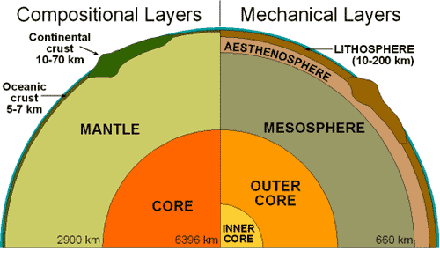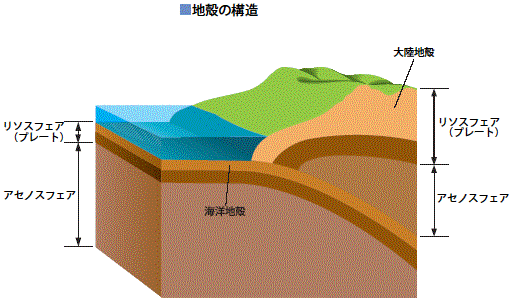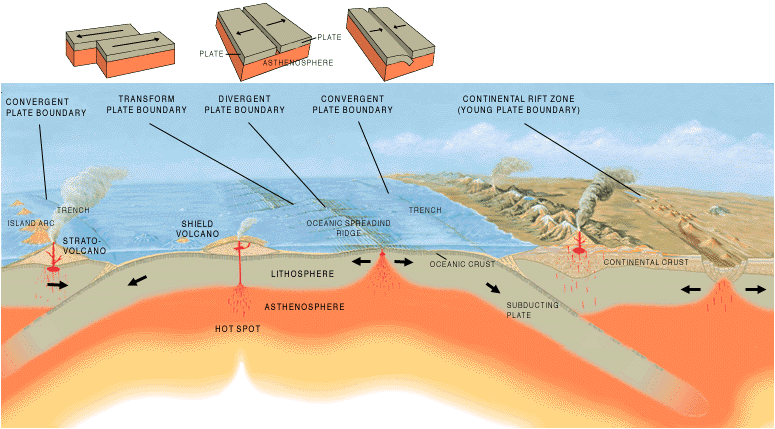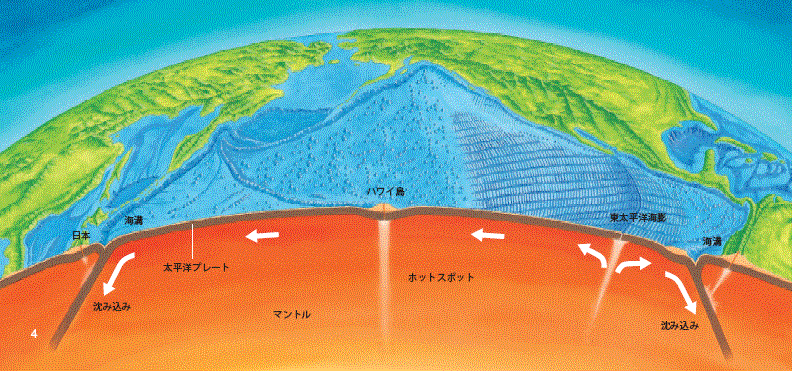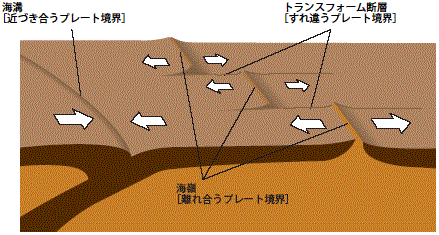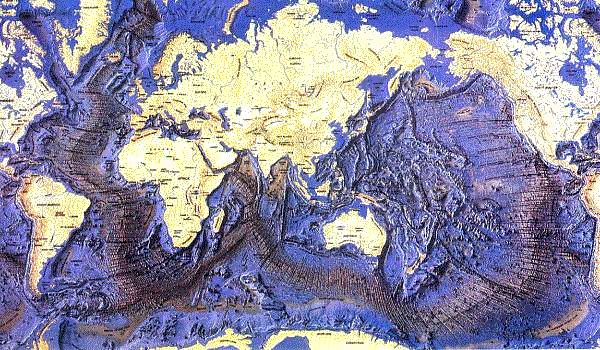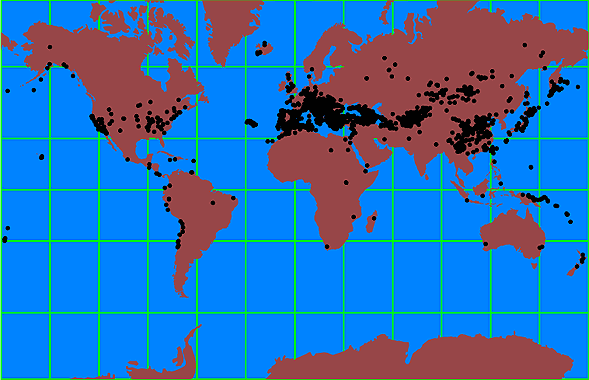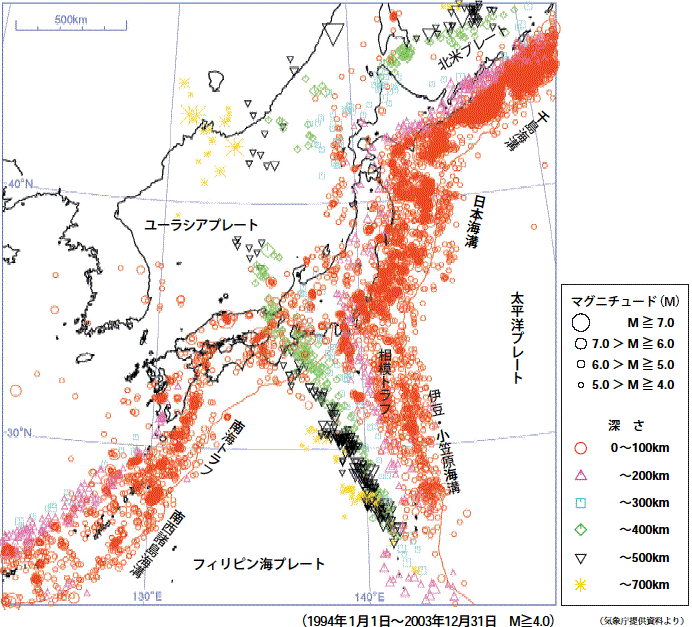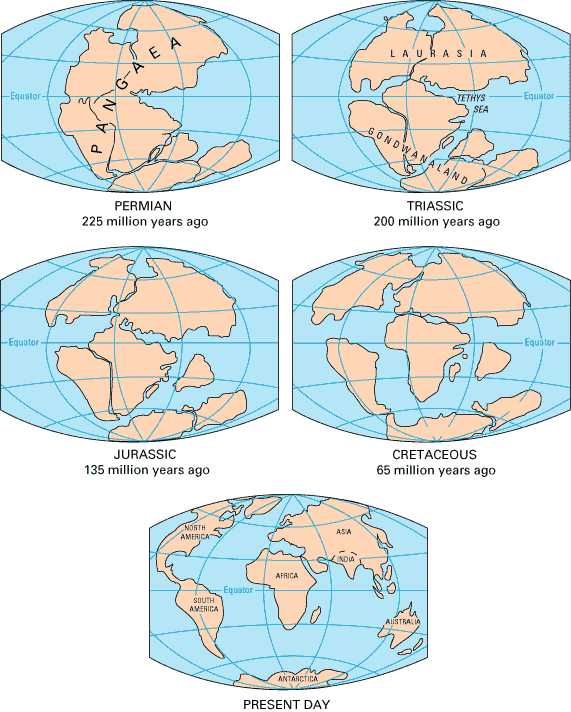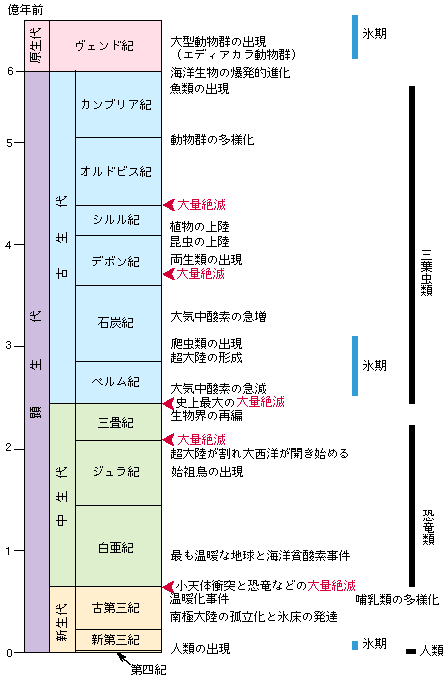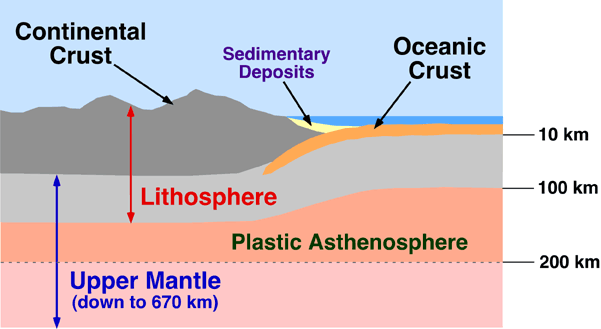
Figure 10h-2: Structure of the Earth's crust and top most
layer of the upper mantle. The lithosphere consists of the
oceanic crust, continental crust, and uppermost mantle. Beneath
the lithosphere is the asthenosphere. This layer, which is also
part of the upper mantle, extends to a depth of about 200 kilometers.
Sedimentary deposits are commonly found at the boundaries between
the continental and oceanic crust.
〔Michael Pidwirny氏によるPhysicalGeography.netの『FUNDAMENTALS
OF PHYSICAL GEOGRAPHY』の『CHAPTER
10: Introduction to the Lithosphere』の中の『(h).
Structure of the Earth』から〕
硬い『リソスフェア』(地殻+マントル最上部)部分が、軟らかいマントルである『アセノスフェア』の上で水平方向の運動を行うというのが『プレートテクトニクス』モデルである。 |
